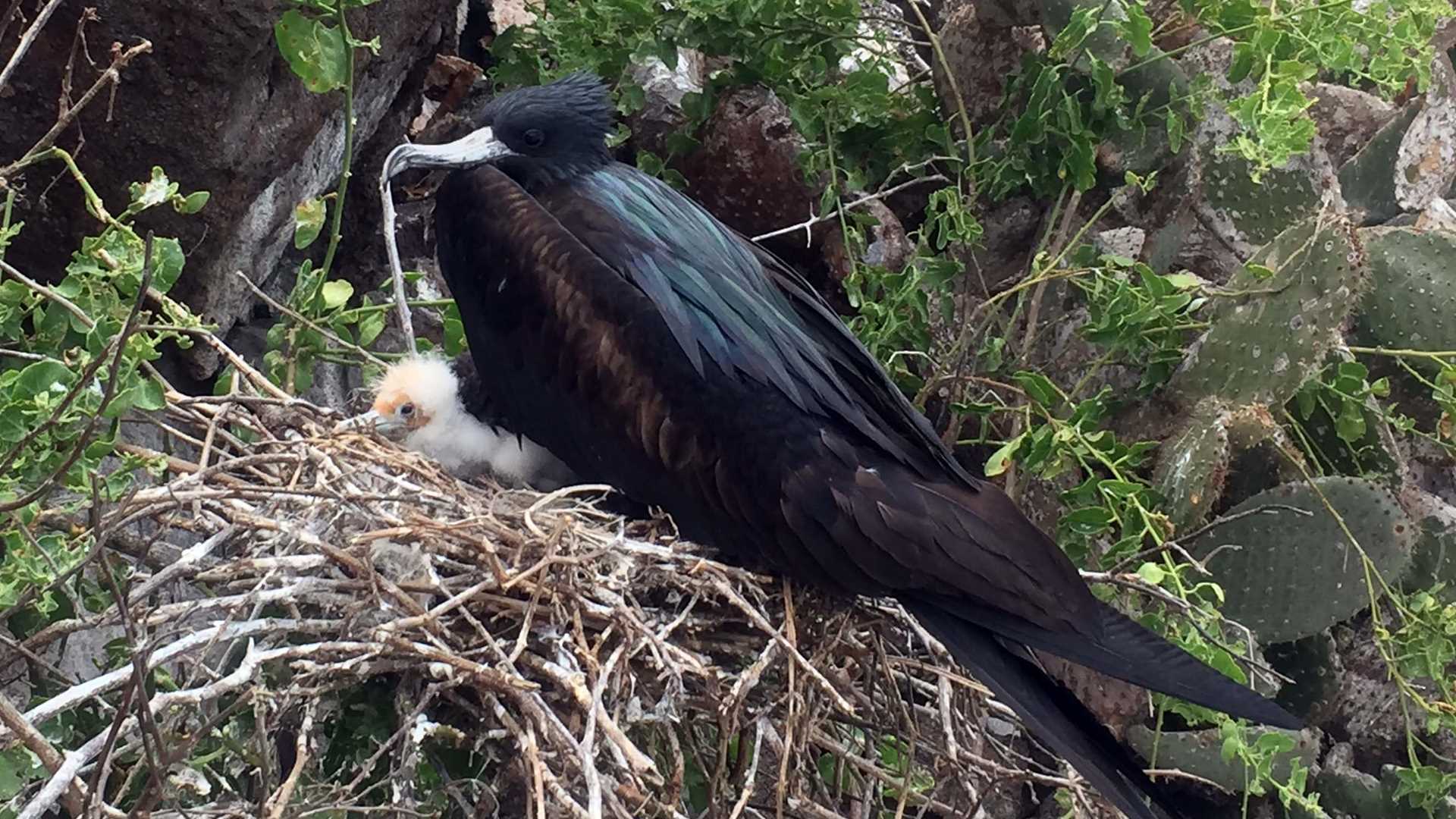Even though land reptiles are the dominant group of vertebrates on the Galapagos, they have not been successful in occupying all of the niches that exist on the extensive and inhospitable geography of the islands, and they are not found in the highlands due to their low temperatures. They only live in the dry zones on almost every island, except Genovesa on where only marine iguanas exist. This is just one of the reasons that Genovesa is so unique, and today, we spent the whole day on this incredible island, which is home to the largest colony of red-footed boobies in the Galapagos.
After a long navigation from the central part of the archipelago, today we started our day anchored in the caldera of Genovesa Island known as Darwin’s Bay, named after the archipelago’s most prominent visitor, Charles Darwin. After breakfast, on our way to the disembarkation area on the beach of Darwin’s Bay, we found the sky was covered with birds. It is easy to see how the island got the nickname, Seabird Island. After landing on a beach covered with small pieces of coral, we started our short hike. The place was absolutely beautiful. It was filled with different species of seabirds such as frigate birds, swallow-tailed gulls, Nazca and red-footed boobies, and many night-crowned herons. It was an indescribable experience. Later on we headed back to the National Geographic Endeavour to get ready for our next activity: snorkeling in the inner rim of the caldera. In the water all of our guests were impressed by the diversity of fish we found. We spotted parrotfish, Moorish idols, damsel fish and many others.
In the afternoon we visited the Prince Phillip’s Steps visitors’ site. There we found a dramatic landscape created by old lava flows covered with many species of seabirds. During our hike we learned that ecological niches are occupied by organisms that are not endemic to the archipelago. A good example is the short-eared owls that have taken on the position of diurnal predator on Genovesa, preying on the abundant storm petrels that nest on this Island. We spotted several of these unusual owls during our walk. It’s incredible the way time flies when you are surrounded by nature and having fun in good company. It was late when we came back to the National Geographic Endeavour, the sunset colored the landscape and sea birds returned to their nests, but in our minds the innocence of those creatures will remain with us forever.







